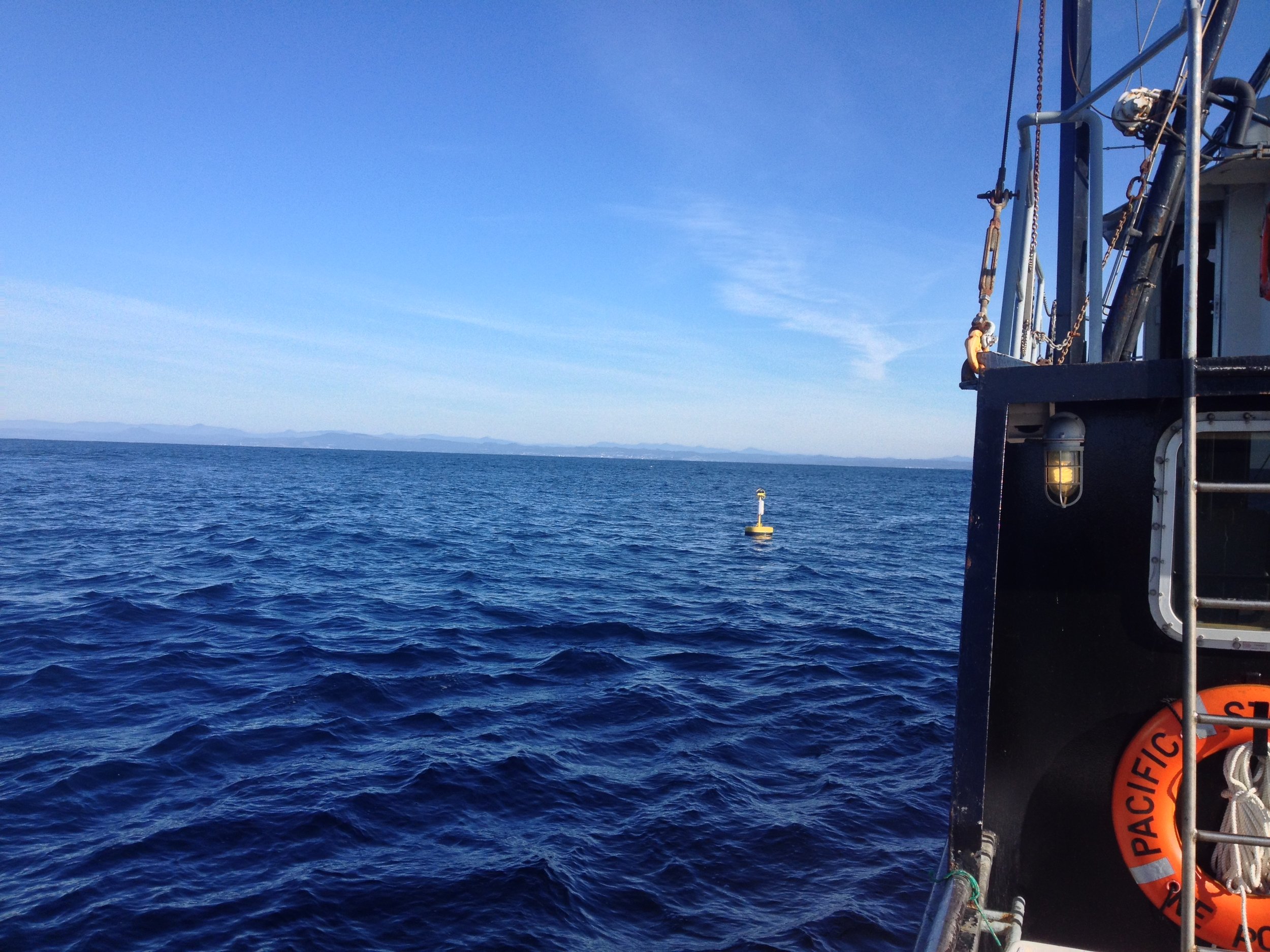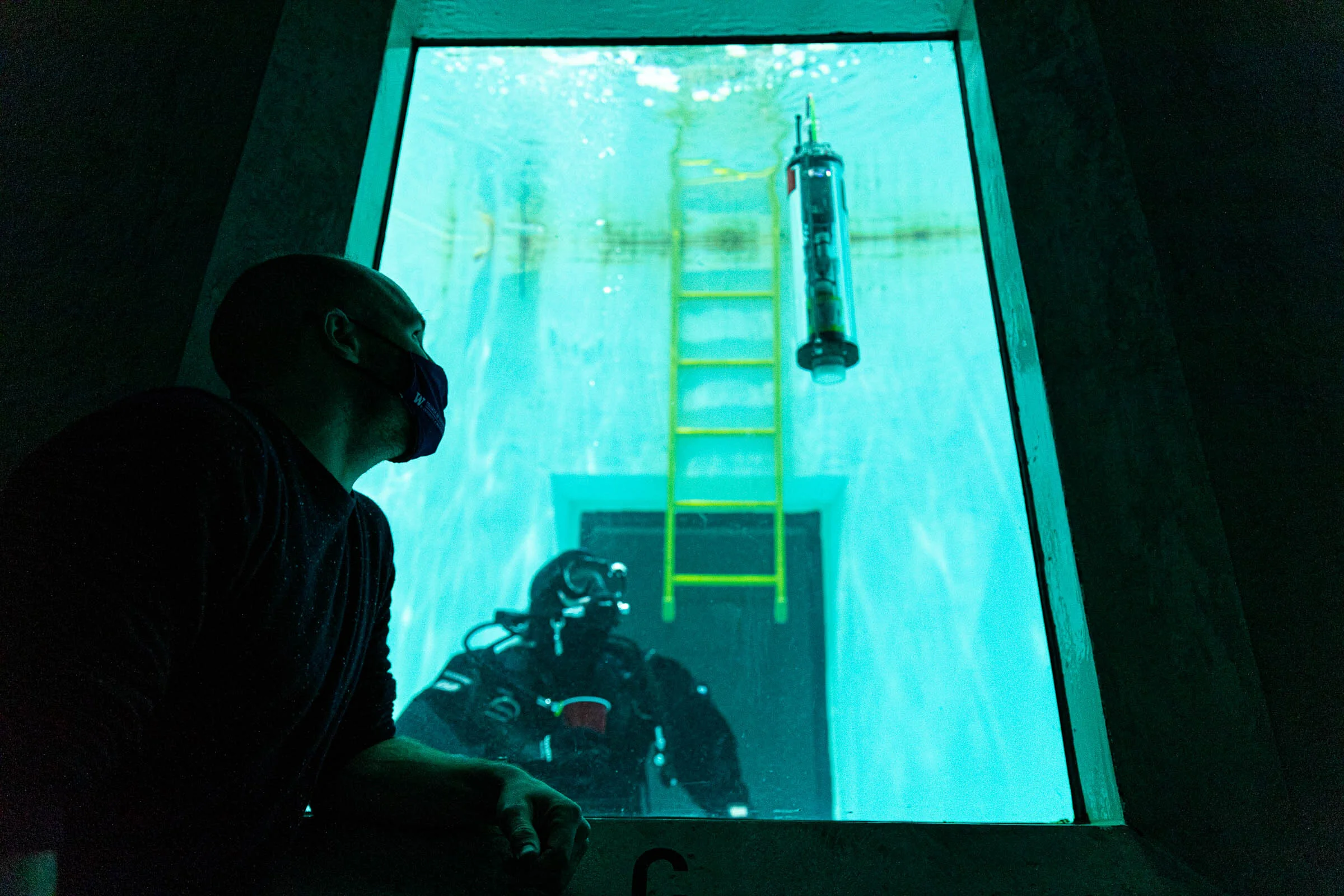PMEC Director Brian Polagye is quoted in a Wall Street Journal article about marine energy investment.
Geekwire: Is the tide turning on renewable marine power?
Congratulations 2021 ORISE Scholars
Congratulations to Trent Dillon, Ali Trueworthy and Katherine Van Ness, three PMEC students chosen as ORISE WPTO-MHK Graduate Student Research Program fellows for 2021. The U.S. Department of Energy’s ORISE fellowship partners high performing graduate students with national labs and private industry to focus on early-stage research and development.
PMEC Teams Take Four Awards at 2021 Marine Energy Collegiate Competition
UW: Lessons in the deep
Looking Back on 2020 at PMEC
PMEC OSU & UW Teams Chosen for Marine Energy Collegiate Competition
Four PMEC Students Win DOE Fellowships
Thesis Series: Hannah Ross on Scaling Effects and Hydrodynamic Performance of tidal turbines
03 July, 2020
By Ali Trueworthy
Like so many other graduate students around the world this Spring, Hannah Ross gave her PhD Dissertation via Zoom. Not only did she present years of work in a mere 50 minutes, but she did so to a screen. Reviewing her dissertation, one can’t help but be amazed by this feat. Hannah’s work spans the theoretical, the computational, and the experimental, all with the goal of improving the scientific understanding of the scaling effects and hydrodynamic performance of tidal turbines. A tidal turbine designed for grid connection could be up to 15 meters in diameter. Think about trying to test something that big! It would be expensive and time consuming. To reduce that expense, designers need to use computational models or to test smaller versions of their turbines. Any computational models must be validated with experimental results. The challenge of testing smaller versions of tidal turbines is understanding how the important measures of turbine performance, such as power output, scale as the turbine gets smaller. By understanding that, researchers and developers can make accurate estimates of the performance of full-sized turbines.
Model tidal turbine in the Bamfield Marine Sciences Centre Fluid Dynamics Lab in 2017. PC: Noah Johnson
In her most recent work, Hannah determined the impact of the blockage ratio, Reynolds number, and Froude number on turbine performance. This work, she said, was the most rewarding of her PhD. It allowed her to “take a step back and look at the fundamentals.” Hannah began this work due to problems she was having with some other experiments. She had been running experiments and getting inconsistencies in the results, so she set out to understand why. She determined that, when experimenting with a model turbine, one not only has to control the blockage ratio, Reynolds number, and Froude number, but also the water temperature, flow speed, channel depth, turbine height, and submergence depth. With such excellent experimental capabilities at the University of Washington, Hannah was able to control each of these parameters, and thereby understand the importance of holding them constant during experimental testing and account for their impacts in computational modeling.
Hannah working on a tidal turbine experiment in the Bamfield Marine Sciences Centre Fluid Dynamics Lab in 2017. PC: Noah Johnson
Another aspect of her work that Hannah found to be particularly exciting was the mathematical and experimental work she did to evaluate blockage corrections. Blockage corrections are numerical operations performed on experimental results to account for the change in water flow due to the confinement of experimental tests. The walls of flumes or water tunnels where experimental testing is usually performed impact how the water moves past the turbines, and thereby, the turbine performance. When Hannah began her work evaluating blockage corrections, she noticed that there were quite a few different published options. By understanding where each correction came from and how they were applied, Hannah was able to see that many of the theories were based on the same set of equations. She said, “doing the math and putting it all together added clarity to the relationships between them all.” For this part of her dissertation, Hannah got to compare results from her experiments in the University of Washington flume to experiments completed in the much larger tow tank at the University of New Hampshire.













